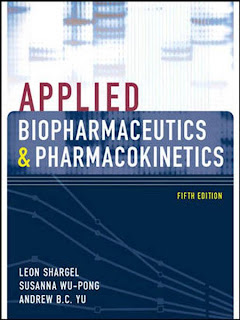Ø Pheochromocytoma:
A
pheocromocytoma is a rare, usually benign tumor that
develops most commonly in the core of an adrenal gland. Tumors that occur
outside of the adrenl gland are referred as paragangliomas.
Generally 80% of
pheochromocytomas are located in the adrenal medulla. Extraadrenal sympathetic
paragangliomas commonaly located in the abdomen. Extra- adrenal parasympathetic
paragangliomas are most commonly found in the neck and head.
A pheochromocytomas cause adrenal glands to produce too much of hormones, raising blood pressure and heart
rate. it may be life-threatening if unrecognized or untreated.
A pheochromocytoma can develop at any age, but
most commonly occurs in middle age. Usually, treatment for pheochromocytoma can
return blood pressure to normal.
Sometimes pheochromocytoma is
part of another condition called multiple endocrine neoplasia syndrome (MEN).
Ø Signs and Symptoms:
- High blood pressure
- Rapid heart rate
- Forceful heartbeat
- Excessive sweating
- Abdominal pain
- Sudden-onset headaches — usually severe — of varying duration
- Anxiety
- Feeling of extreme fright
- Pale skin
- Weight loss
- Amyloid deposits found microscopically
- Elevated blood glucose level
o
These signs and symptoms
develop because this type of tumor produces an excess of chemical compounds
called catecholamines.
o
Excessive secretion of
catecholamines — the hormones adrenaline and noradrenaline lead to high blood
pressure. High blood pressure is
a common sign of a pheochromocytoma.
o
Elevated blood glucose
level arise due to cateholamines which stimute lipolysis which leads to high
levels of free fatty acids that cause inhibition of glucose uptake by muscle
cells. Further, stimulation of beta-adrenergic receptors leads to
glycogenolysis and gluconeogenesis and thus elevation of blood glucose levels.
o
Not all patients experience all of
the signs and symptoms listed. The most common symptoms are headache, excessive
sweating, and increased heart rate, with the attack subsiding in less than one
hour.
Ø Causes:
·
Up to 25% of pheochromocytomas may
be familial. Hereditary conditions associated with
pheochromocytomas include
Multiple endocrine neoplasia 2A and 2B(MEN
IIA,MEN IIB),
Von Hippel–Lindau disease(VHL),
Neurofibromatosis I(NF-1),
RET Oncogene,
SDHB,
SDHC and
SDHD
Ø Diagnosis:
·
The diagnosis can be done by measuring catecholamines and metanephrines in blood or through a 24-hour urine collection.
Imaging by computed tomography or a T2 weighted MRI of
the head, neck, and chest, and abdomen can help localize the tumor.
·
Blood and urine tests:- These tests can measure elevated levels of the hormones
adrenaline and noradrenaline and their breakdown products (metanephrines). It
need to collect urine samples over a 24-hour period for testing. The increased level of this metabolites in blood or inceased excretion
of these metabolites is indicative of the disease, but does not completely rule out other
diseases which may cause the same excretion values.
·
Imaging scans. A CT scan of your abdomen can detect the tumor in most cases.
However, it may be necessary to scan other areas of body, such as neck, chest
and pelvis. Scanning with other diagnostic imaging techniques, such as magnetic
resonance imaging (MRI), a metaiodobenzylguanidine (MIBG) scan or a positron
emission tomography (PET) scan, may be done to detect the tumor.
Ø Treatment:-
Surgery is the
treatment of first choice. It is
important to stabilize blood pressure and pulse with medication before surgery. When the tumor cannot be surgically
removed, medication is needed to manage it. This usually requires a combination
of medications to control the effects of the excessive hormones.
v
Medications used to treat high blood pressure
associated with pheochromocytomas include:
§ Alpha blockers. Alpha blockers is used to block noradrenaline
activity. They work by keeping the hormone noradrenaline
from stimulating the muscles in the walls of smaller arteries and veins. This
stimulation makes the vessel walls constrict. Blocking that effect causes the
vessels to remain open and relaxed. This improves blood flow and lowers blood
pressure.
o
Drugs: phenoxybenzamine,
doxazosin, prazosin and terazosin.
o
Side effects: headache, pounding heartbeat,
nausea and weight gain.
§ Beta blockers. Beta blockers make
heart beat more slowly and with less force. They work by blocking the effects
of the hormone norepinephrine. This action slows down the nerve impulses that
travel through heart. That means heart doesn't pump as hard because it needs
less oxygen and blood. Beta blockers also slow down the release of the enzyme
renin from kidneys, helping keep blood vessels dilated.
o
Drugs: atenolol, metoprolol and propranolol .
o
Side effects: fatigue, headache, upset stomach
and dizziness.
§ Calcium channel blockers. Calcium
channel blockers relax and widen blood
vessels in arteries. They lower blood pressure by preventing calcium from
entering the cells of heart and blood vessel walls.
o
Drugs: amlodipine, diltiazem and nicardipine.
o
Side effects: constipation, headache,
tachycardia and drowsiness.
§ Metyrosine. This drug lowers blood
pressure by inhibiting the production of catecholamines. It may be used when
other drugs haven't worked or with other drugs.
o
Side effects: drowsiness, depression, anxiety
and diarrhea.
v
Surgery:
90% of patients are cured by surgery. Surgery for tumors is usually
done by laparoscopy. Once the tumor is removed, blood pressure usually falls to
normal or low normal. Patients who have blood pressure that stays too low, or
who have poor circulation in the arms and feet, may need transfusions of blood,
plasma, or other fluids. After surgery, some patients have a fall in blood
pressure followed by a rise in blood pressure. Sometimes surgery is not an
option because of the type of tumor growth or because the tumor spreads
(metastasizes) to other parts of the patient's body.
v
Malignant tumors:
Current treatments for malignant tumors include chemotherapy, or
radioactive MIBG. For patients in whom surgery is not successful, or for those
who cannot undergo surgery, symptoms are controlled with medications.


















0 comments: